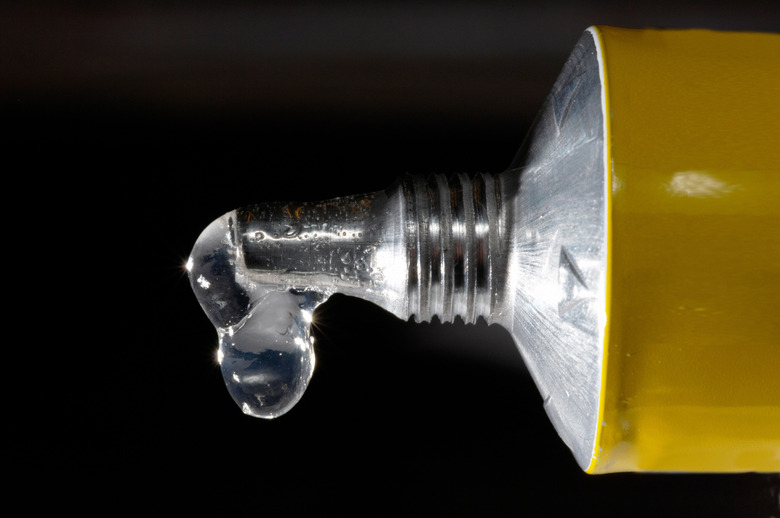How To Remove Glue From Leather
We may receive a commission on purchases made from links.
Accidents can happen in any shape and form, including getting glue on your leather items. Couches, shoes, or even gloves can be susceptible to accidents where glue can adhere to the surface and seem impossible to remove. Removing the glue needs to be done very carefully because you do not want to damage the surface of the leather or remove the dye from a colored leather item. The most important tip to keep in mind is to stay calm and be methodical about the removal process to keep your item in its best state possible.
First, Try Using a Pencil Eraser
First, Try Using a Pencil Eraser
Removing glue on natural-colored leather may be a bit easier because you don't have to worry about the color fading. If you notice a small line or spot of glue on a leather item, you may be able to remove it using a simple pencil eraser. Rub the eraser on the glue tracks and the glue should lift off the surface of the leather after a bit of effort. Being persistent will pay off; just keep in mind that if you want to try this method on dyed leather, you should try it out in an unnoticeable area first.
Things Needed
-
Plastic knife
-
Non-acetone nail polish remover (optional)
-
Towel
-
Soapy water
-
Leather conditioner (optional)
How to Remove Glue From Leather With Rubbing Alcohol or Acetone
How to Remove Glue From Leather With Rubbing Alcohol or Acetone
This technique requires a few more steps to remove glue from leather, especially superglue, but it should get the job done.
1. Remove Excess Glue
Use a plastic knife or some other type of blunt scraper to remove as much of the glue as possible. If the glue is a larger spot with a crusty surface or if you are removing glue from suede, you can even try using fine-grit sandpaper to gently remove the top layer of glue. Remove as much as possible without scratching the surface of the leather.
2. Apply the Removal Product
Before applying rubbing alcohol or acetone to the affected area, test the product on a hidden area to look for any potential reactions. If there is no noticeable change to the leather, add a bit of the rubbing alcohol or acetone to a cotton swab or cotton ball and apply the product by gently rubbing it on the glue. Try to avoid smearing the removal product onto the leather, but make sure the glue itself is saturated and it should begin to loosen.
Tip
If you want to avoid using acetone, you can try the same removal method using a non-acetone nail polish remover instead.
3. Lift the Glue With a Towel
Dab the glue with a towel to transfer it from the leather to the cloth. Continue dabbing the saturated area until the glue has been completely removed. It is very important not to rub the towel over the softened glue, as this could spread the glue and make it more difficult to remove. If small glue spots remain, reapply the acetone or rubbing alcohol to soften the glue once more.
4. Wash the Area With Soapy Water
Once the glue has been completely lifted from the leather, clean the spot with warm, soapy water. Gently clean the area to remove any traces of rubbing alcohol or acetone since these products could be harmful to leather if left on for too long.
5. Condition and Treat the Leather
Consider taking this opportunity to treat your leather and condition it with a protective layer. Removing the glue may have stripped the leather of its natural properties, which you may be able to remedy with a quick leather conditioning.
